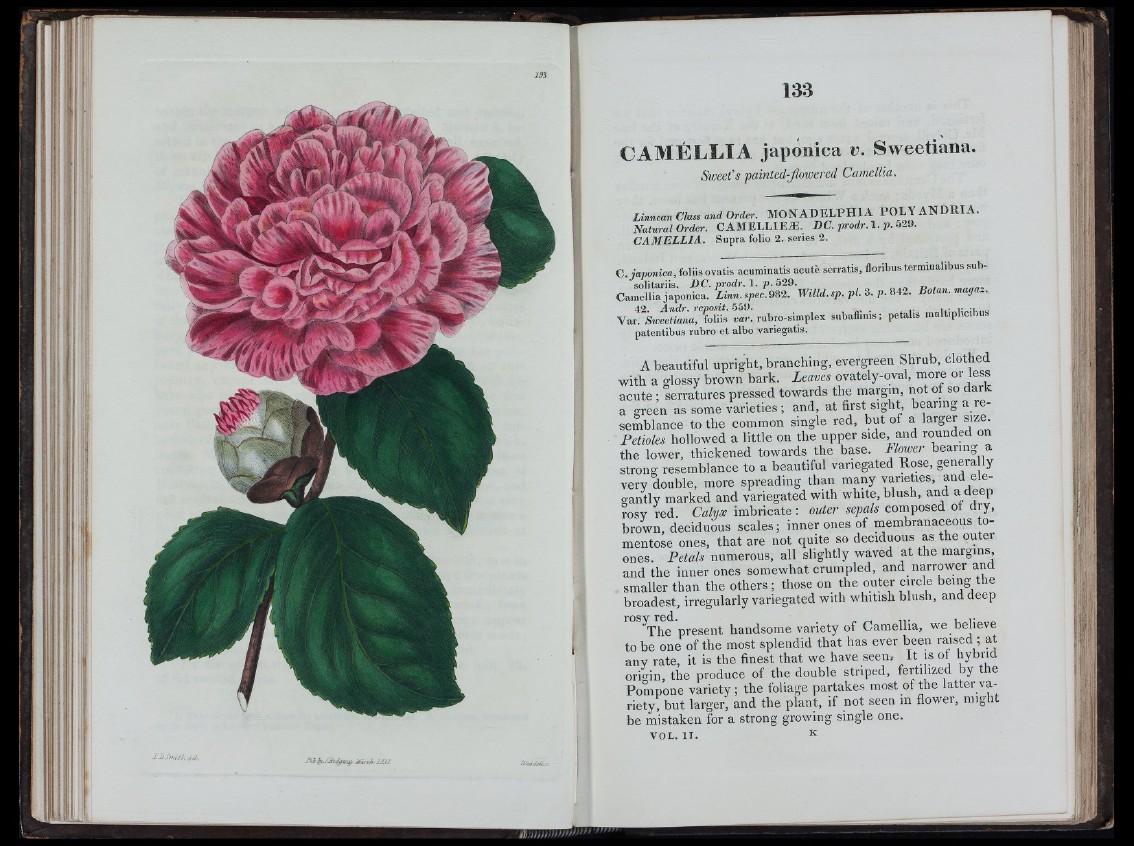
; i» ì
233.
C AM É L L IA japónica v. Sweetiana.
Sweet’s pamted-fiowered Camellia.
Linnean Class and Order. M O N A D E L P H IA PO L Y A N D R IA .
Natural Order. C AM E L L IEA :. D C . prodr. \ . p . 529.
C AM E L L IA . Supra folio 2. series 2.
C.japonica, foliis ovatis acuminatis acutè serratis, f l o r i b u s terminalibus sub-
CameluaTaponfof’ spec.982. Willd. sp. pi. 3. p . 842. Botan. magaz.
N a t% w t l t i ln a 4 o Y b i ^var. rubro-simplex subaflSnis ; petalis multiplicibus
patentibus rubro et albo variegatis.
A beautiful upright, branching, evergreen Shrub, clothed
with a o-lossv brown bark. Leaves ovately-ovai, more or less
acute ; serratures pressed towards the margin, not of so dark
a green as some varieties ; and, at first sight, bearing a resemblance
to the common single red, but of a larger size.
Petioles hollowed a little on the upper side, and rounded on
the lower, thickened towards the base. Fltmer bearing a
strong resemblance to a beautiful variegated Rose, genera ly
very double, more spreading than many varieties, and elegantly
marked and variegated with white, blush, and a deep
rosy red. Calyx imbricate: outer sepals composed ol dry,
brown, deciduous scales; inner ones of membranaceous tomentose
ones, that are not quite so deciduous as the outer
ones. Petals numerous, all slightly waved at the margins,
and the inner ones somewhat crumpled, and_ narrower and
smaller than the others; those on the outer circle being the
broadest, irregularly variegated with whitish blush, and deep
Ffhe present handsome variety of Camellia, we believe
to be one of the most splendid that has ever been raised ; at
any rate, it is the finest that we have seen. It is of hybrid
orioin, the produce of the double striped, ferti ized by the
Pompone variety ; the foliage partakes most ot the latter variety)
but larger, and the plant, if not seen in flower, might
be mistaken for a strong growing single one.
VOL. I I . K
1Í ■
i i
| i i
I
i b i